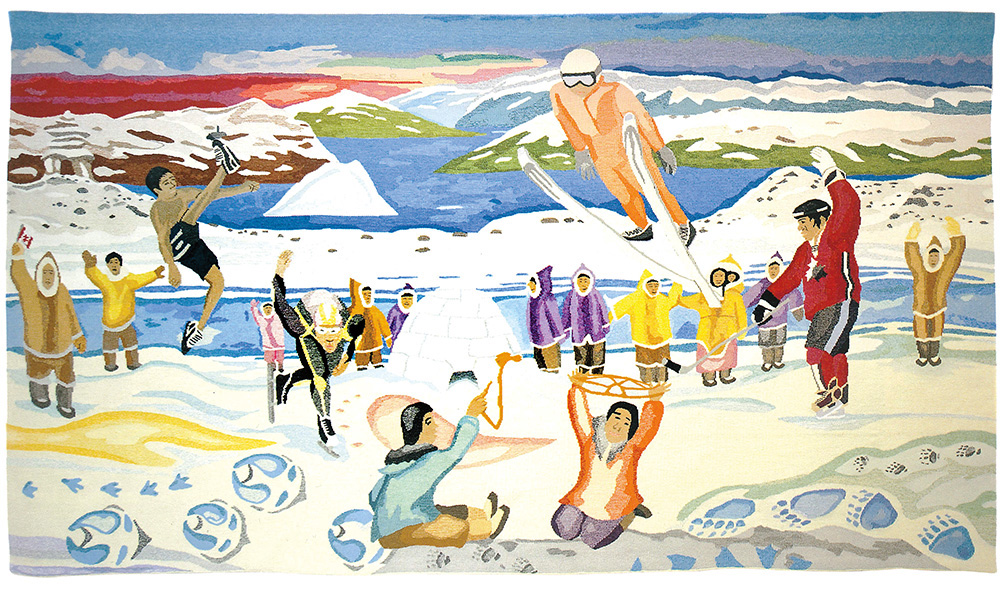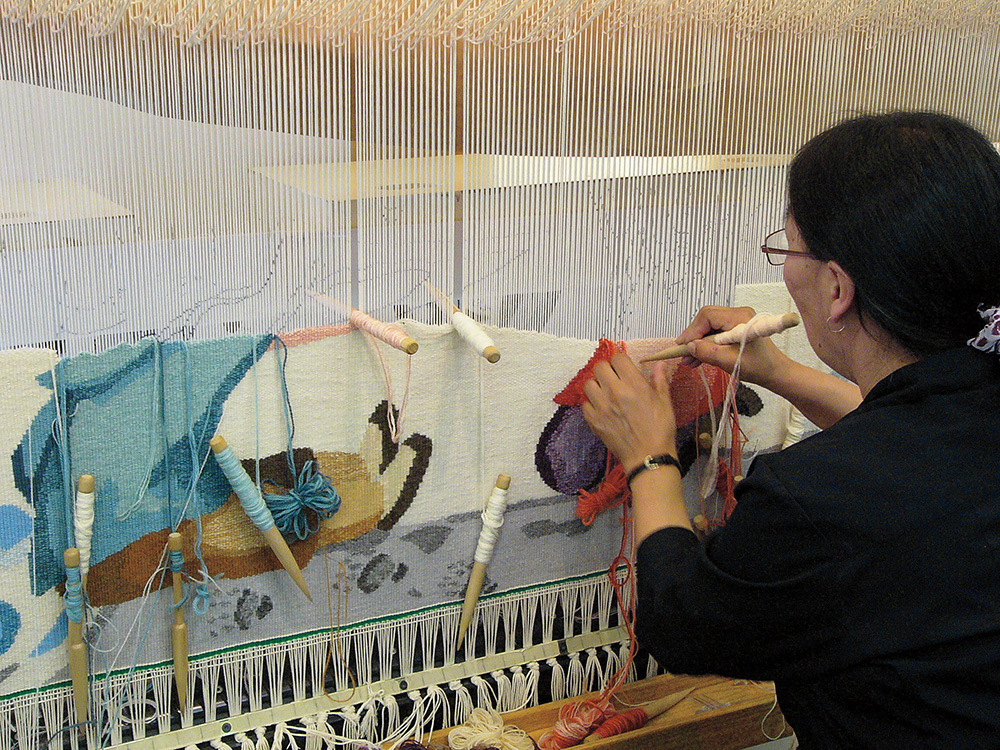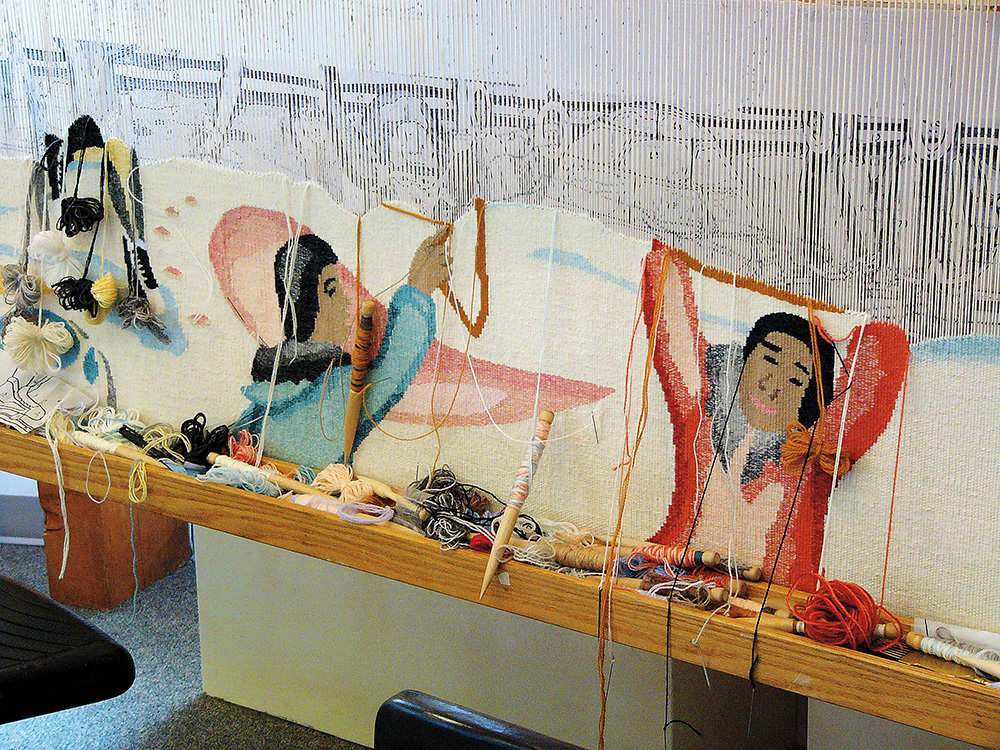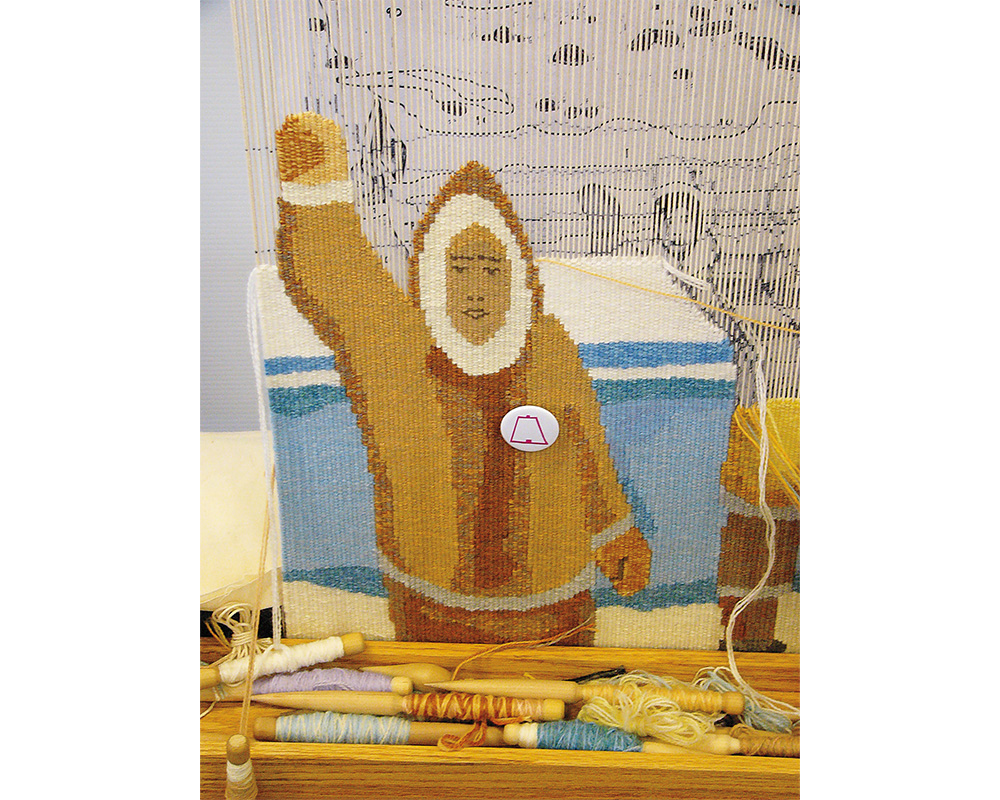How 10 Inuit Artists Came Together to Weave an Olympic Tapestry
Inuit Art Foundation | January 19, 2021
Categories: news

In 2010, the tapestry Achieving a Dream (2009) graced the walls of the Richmond Olympic Oval for the Olympic and Paralympic Winter Games. Behind its captivating presence is a story of the dedicated and skilled artists who created the piece. In this Legacy, the IAQ speaks with artists Andrew Qappik, CM, of Panniqtuuq (Pangnirtung), NU, and David Cochrane of Scotland to weave together the tale of those who helped make the dream of an Olympic tapestry a reality.
The weaving of tapestry is a detailed artistic practice, one that requires intricacy, commitment and physical effort. Tapestries combine beautiful imagery, storytelling and a range of colour palettes, calling us to reach out and touch them. It is no wonder that Inuit tapestries are highly sought after, especially those from renowned weaving studios such as the Pangnirtung Tapestry Studio, located in the Uqqurmiut Centre for Arts & Crafts in Panniqtuuq, NU. The studio produces a range of woven pieces, such as scarves, blankets and rugs, but it is their tapestries, both commissioned and editioned, that draw particular attention. This special place of creation and the interest in the talented works of its weavers led to the studio being commissioned to weave a tapestry for a historical moment in time—the 2010 Olympic and Paralympic Winter Games.

The Vancouver Organizing Committee (VANOC) for the 2010 Olympic and Paralympic Winter Games launched the Vancouver 2010 Venues’ Aboriginal Art Program, which was “designed to celebrate the spirit of the nation by promoting understanding of the rich cultures and traditions of the [Indigenous] peoples in Canada.” [1] Through this program, the Pangnirtung Tapestry Studio received $100,000 from VANOC, in collaboration with Inuit Tapiriit Kanatami (ITK), to create the six-by-ten-foot woven piece. The tapestry was one of five permanent artworks that would be unveiled at the Winter Games in February 2010. [2]
With the piece commissioned and the start of the Winter Games looming in the distance, a new question emerged: What will the design be? This was important, as it needed to combine Olympic thematic elements with Inuit imagery and perspectives. In stepped Andrew Qappik, CM, a skilled graphic and print artist from Panniqtuuq, to create the design that would eventually become the Olympic tapestry.

Qappik combined the works of four Inuit artists—Dinah Andersen of Nunatsiavut, Sammy J. Kudluk of Kuujjuaq, Nunavik, QC, and Mabel Nigiyok and Louie Nigiyok of Ulukhaktok, Inuvialuit Settlement Region, NT. The creative team was chosen through an adjudication process to represent each Inuit region. [3] Qappik says it was a “privilege to create a work of different artists put together into one tapestry.” [4]
But the creation didn’t stop there; it needed to embody an Olympic feel. This resulted in the interworking of images of athletes performing a variety of sports, from speed skating and ski jumping to hockey and the high jump. “I put in the sorts of sports [seen at the Olympics], scenes of traditional games and landscapes from different regions of Canada—of the North,” says Qappik. The hockey player on the right side of the tapestry had a special meaning for the artist. “At that time we had an Inuit hockey player who’s from Rankin Inlet: Jordin Tootoo. I put the Inuit hockey player there for the Canadian team,” he says.

Continue reading this article on Inuit Art Foundation.


